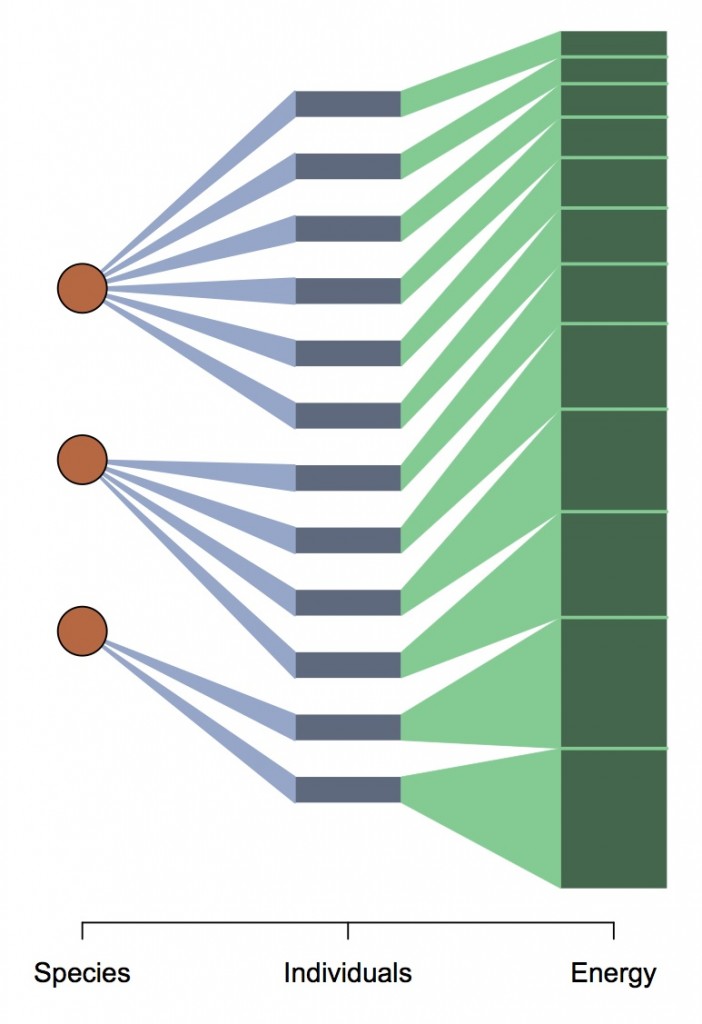Assembly Over Time
We are sampling arthropods in a quantitative manner across the different aged volcanoes in Hawaii.
Here, Andy Rominger demonstrates the approach for beating, in which (i) a plot is assessed for the proportion of a given plant (out of all plants), with beating duration proportional to the abundance of that plant in the plot:
Here, Natalie Graham is demonstration in Volcano
Another technique is malaise trapping, both in the canopy and on the ground. Here, Andy demonstrates the canopy malaise
Also, for branch clipping, and putting up the canopy malaise, tree climbing is part of the work. Here, Brendan is climbing a tree in Kaiholena
Dan Gruner demonstrating different techniques
Food Webs
For the focal species, we are developing information on interactions based on plant associations coupled with gut content analysis, and for herbivorous, detritivorous, and predatory arthropods. These sequences allow us to reconstruct the networks between arthropods, their prey/ hosts, and their microbial associates. We are reconstructing interaction networks. This allows us to test how networks are affected by invasion by quantifying network structure using four complementary approaches: 1) deviation from the maximum entropy predictions; 2) classic ecological network metrics of nestedness and modularity; 3) network dissimilarity; and 4) network specialization. Comparing across native sites of different elevation and precipitation will allow insights into the connections between network structure, niche occupancy, population size change, and deviation from statistical steady state. We will then be able to use these models for niches and networks to project these drivers into the future, predicting where statistical steady stead will be violated. Using our understanding of how statistical steady state contributes to invasibility of a community we will also be able to model invasion risk across scales and into future climate scenarios
Theoretical Implications

Biological diversity is fundamentally important to the functioning of all natural and human-engineered ecosystems. Yet we still have only a very rudimentary understanding of biodiversity as a dynamic process–how has it been shaped in the past, and what are the expectations as we move into the future? How will associated ecosystems adapt to global change? A grand challenge in understanding the origins of biodiversity is to disentangle the influence of evolutionary and historical processes operating at larger spatiotemporal scales from ecological processes operating at smaller scales. Our research uses the Hawaiian Island chronosequence as a natural laboratory for understanding community interactions that underlie biodiversity dynamics and environmental change by incorporating new technologies and theoretical approaches, coupled with standardized sampling protocols, thus providing temporal replicates of the same ecological and evolutionary processes across gradients of elevation. The approaches are: (1) Characterizing the arthropod community using metabarcoding and related approaches. (2) Look at how entire communities are changing across gradients of time and elevation. The data will be integrated into a statistical (Maximum Entropy Theory) and Bayesian framework in order to determine signatures of change from ecological processes to evolutionary processes over gradients of elevation, precipitation, and time.